There is no uniform answer to the question of how to train Belgian Malinois or any other dog breed.
Dog training is about training the dog in front of you, and it is a personalized journey tailored to each dog.
Rather than relying solely on generic YouTube tutorials or books to solve difficult problems, the most important aspect of an effective training session is understanding and adapting to your dog and their unique needs.
By adjusting your training methods to suit the specific temperament and learning style of your Malinois, you can go a long way to form a strong bond and achieve successful results together.
Belgian Malinois Training
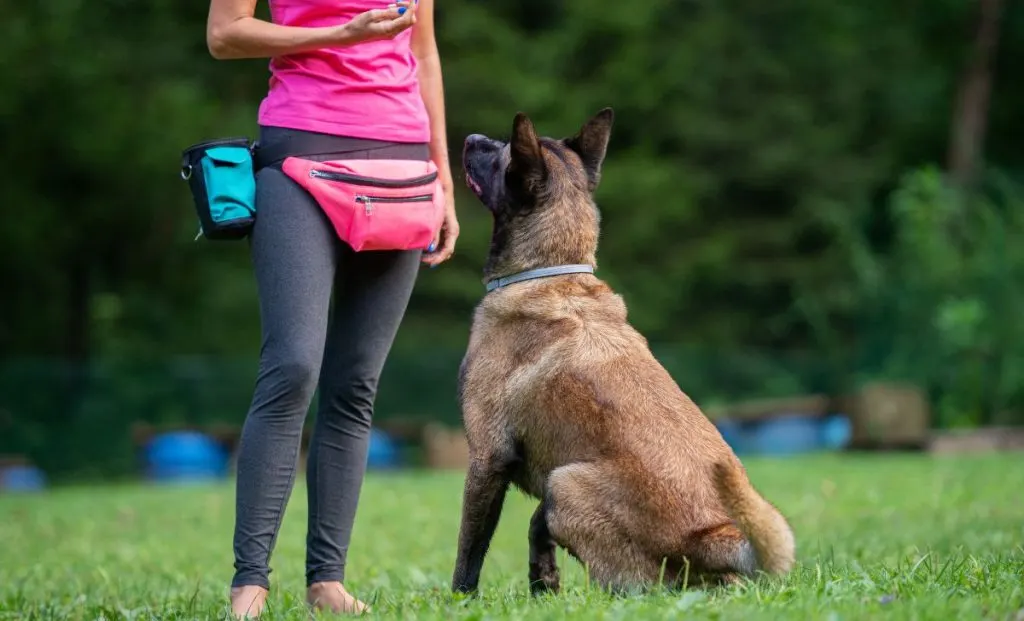
Belgian Malinois are extremely intelligent dogs, which makes them enthusiastic (and fast!) learners.
It’s recommended that Belgian Malinois puppies be trained by an expert knowledgeable about the breed.
A seasoned trainer will be able to help train your canine for jobs that can stimulate their mind—a vital element for this breed.
If you want to train a Mal, you should start the training at a young age. Premature and thorough training can help you eradicate territorial or aggressive demeanor, which can pop up in this dog breed if it is not well trained.
With consistent, precise, and skilled training, a Maligator can be trained to do multiple jobs, including herding and protection. (1)
Puppy Socialization
Start the socialization process of your pup at a young age. Weeks four to fourteen are the best periods to engage in intense socialization. (2) This is just one of many aspects where a responsible breeder is vital.
Responsible breeders prioritize puppy socialization from the beginning, typically starting as early as three weeks of age and continuing until the puppies are ready to return to their new homes.
If you are from Cali, you are lucky. Check out California’s most trusted Belgian Malinois breeders!
Socialization involves exposing the puppies to various stimuli, environments, people, and animals to help them develop into well-adjusted adults and see that all those things are a normal part of life.
Socialization Tips
Expose your Belgian Malinois puppy to diverse environments by walking or carrying them in public places like busy shopping streets and marketplaces.
This early exposure helps them become accustomed to being around different people, reducing the likelihood of feeling threatened by unfamiliar faces.
Invite a wide range of individuals to your home to further socialize your puppy.
Regularly introducing strangers in your home teaches your dog that new people are appearing every day, fostering a sense of ease and comfort in varied social settings.
Other socialization tips for Belgian Malinois puppies include:
- Arrange playdates with other dogs to encourage positive interactions and teach appropriate social behavior.
- Expose your puppy to various sounds, such as vacuum cleaners, doorbells, and car horns, to desensitize them to loud noises.
- Take your puppy on car rides to familiarize them with traveling and prevent anxiety during future trips.
- Visit different environments, such as parks, beaches, and pet-friendly stores, to expose your puppy to new sights, smells, and surfaces.
- Enroll your puppy in puppy socialization or obedience training classes to learn valuable skills and interact with other animals and people in a structured environment.
By implementing these socialization techniques, you can help your Belgian Malinois puppy grow into a confident, well-rounded adult dog who feels comfortable and secure in various social situations.
The Importance Of Play
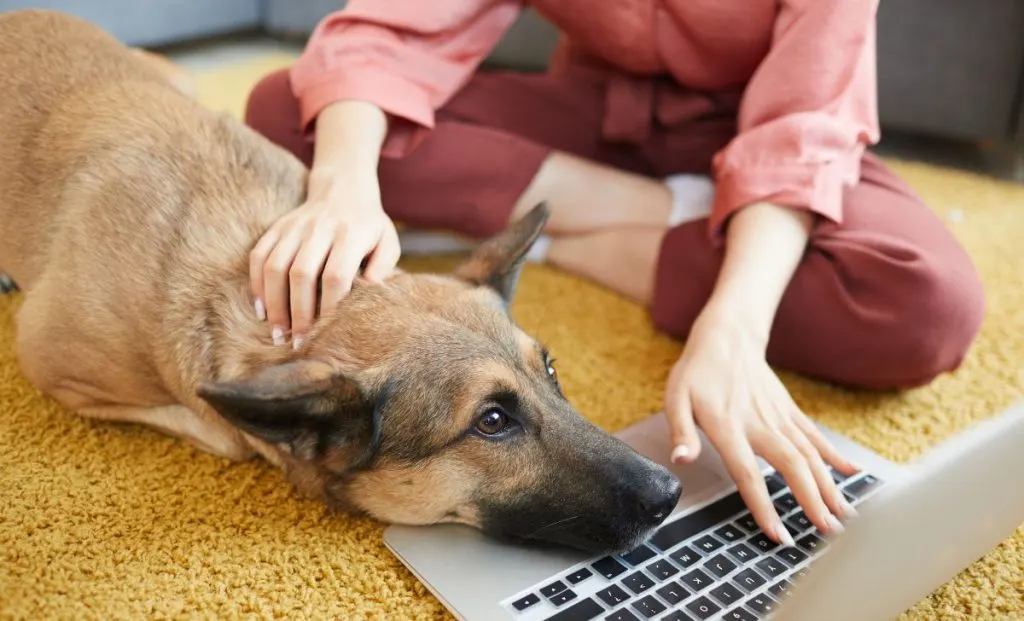
Spend a lot of quality time with your pup!
Play is one of the most important things in a dog’s life and is one of the essential ways of building a good relationship with your dog.
The Maligators are very affectionate dogs that adore spending time with their humans.
At least an hour of play daily is a good time for a small puppy. Please do not play with the dog for a whole hour; space it out in 15-minute sessions throughout the day.
However, if you have an older dog, they can use more time to exercise and play with you.
Playtime Ideas For Relationship Building
- Fetch: Use a favorite toy or ball and throw it for your puppy to retrieve. Start with short distances and gradually increase the challenge as they become more confident.
- Tug-of-War: Use a rope or soft tug toy and gently play tug-of-war with your puppy. Remember to let them win all the time to keep it fun and prevent any possessiveness over the toy.
- Hide and Seek: Hide behind furniture or around corners and call your puppy’s name to encourage them to find you. Reward them with praise and treats when they discover your hiding spot.
- Interactive Toys: Provide puzzle or treat-dispensing toys that challenge your pup to figure out how to access the treats inside. This stimulates their problem-solving skills and keeps them mentally engaged.
- Chase: Encourage your puppy to chase you around the house or yard. Ensure you maintain a safe environment and avoid running too fast to prevent accidents.
- Training Games: Incorporate training exercises into playtime by teaching your pup basic commands like sit, stay, or shake. Use food and positive reinforcement to reward their efforts.
Always supervise playtime and ensure that activities are safe and appropriate for your puppy’s age and size.
Play should be enjoyable and positive for both you and your furry companion!
Emotions And Training
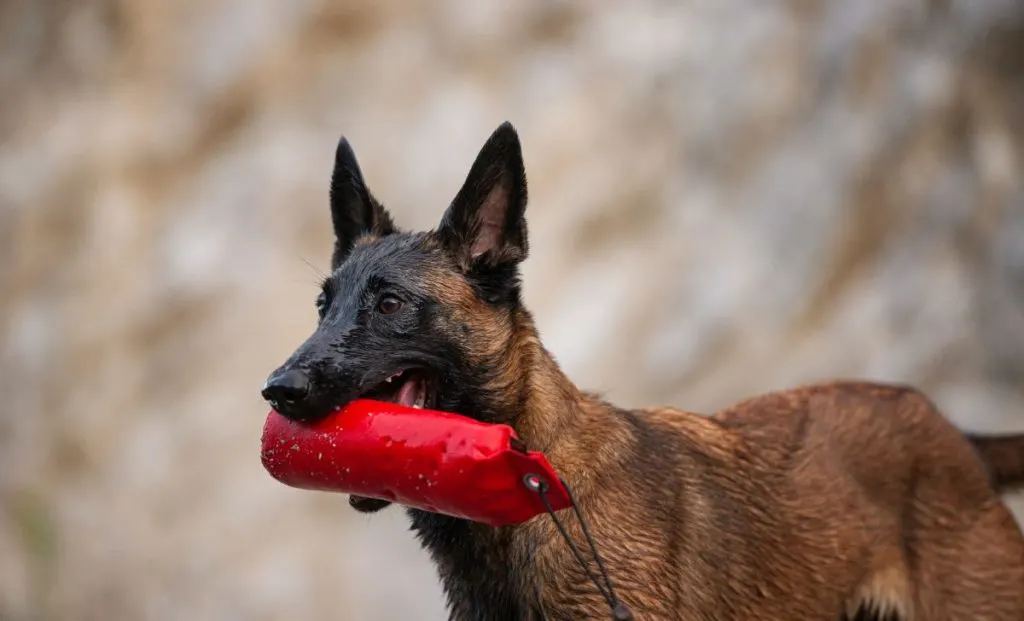
You must be gentle with your dog.
To create a good training foundation, it would be best to never get violent or angry with the dog. The Belgian Malinois does not respond to aggressive training techniques.
You have to manage your expectations regarding your dog’s behavior. Training takes quite a lot of time and a lot of repetition to become effective.
While it is crucial to stop negative behaviors and set boundaries, redirection and showing the puppy what it should do instead is much more effective than shouting or hitting the pup.
Remember, when you are yelling at a puppy, it most likely has no idea why you are yelling at it.
Basic Obedience
Basic obedience can start at eight weeks old. A young puppy is capable of learning how to follow simple commands.
However, you can not just give the dog a verbal command and expect it to obey. Luring and shaping the dog’s behavior with food is an essential step in the whole process.
Use reward-based training methods. Instead of punishing a puppy for doing the wrong thing, give the dog praise and treats for doing positive things.
When the dog obeys a command, goes to the bathroom outside, or comes when called, give it affection, tell him or her how smart he or she is in a pleasant voice, or give them a small treat immediately.
By starting this positive reinforcement early, the dog will strive to do things that please you in the future. (3)
This positive reinforcement can start quite early, and using it when the pup is young will help you with more advanced training later.
Obedience Tips
Modify the length of training sessions as the pup ages.
When your Malinois is a young pup, training sessions should be 10 minutes long. As the pup grows up, you can slowly extend each training session from 30 minutes to 1 hour. (4)
Malinois are a high-drive breed that loves being active, learning, and spending time with their human, so most of them are happy to do several training sessions a day.
Use consistent commands and cues for each behavior you want to teach. This helps your pup understand what is expected of them and reduces confusion.
Start with basic commands like sit, stay, come, and down. Once your puppy has mastered these, you can move on to more advanced training.
Remember that puppies are learning, so be patient and understanding. Avoid punishment or scolding, as this can confuse and frighten your puppy.
Practice obedience commands in different environments, both indoors and outdoors. This helps your puppy generalize their training and respond reliably in various situations.
Introduce distractions gradually as your puppy becomes more proficient in their training. Start with mild distractions and progressively increase the difficulty level.
Always end training sessions positively, even if progress is slow. This keeps your puppy motivated and eager to learn during the next session.
If you’re struggling with obedience training or your puppy displays challenging behaviors, don’t hesitate to seek guidance from a professional dog trainer or behaviorist.
Clicker Training
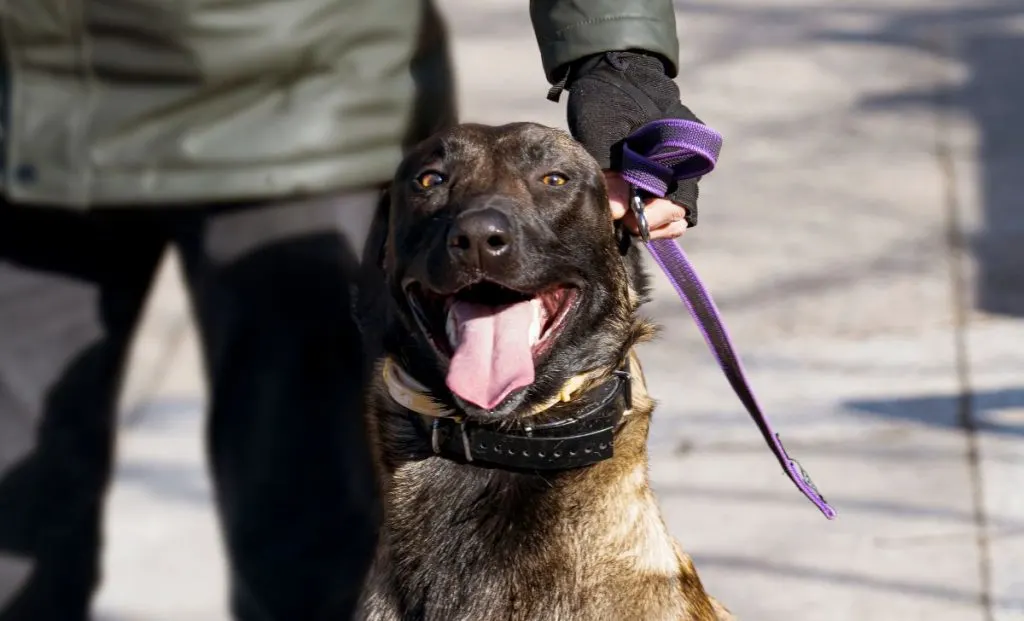
Consider using clicker training.
Clicker training is a reward-based training style that also incorporates a distinctive clicking noise.
This noise is made when the dog does what you have asked, which helps the dog understand when it has completed what it was asked to do.
Clicker training is a helpful training method because it eliminates some of the confusion that can occur between trainer and dog.
When the clicker is clicked right when the dog does what you asked, there is no ambiguity about your commands.
This can be very helpful when giving a dog extensive and skilled training, which is common with the Malinois breed.
Advanced Training
After your dog has nailed down the fundamentals, you can explore advanced tricks or even introduce them to dog sports.
These endeavors not only keep your furry friend physically and mentally engaged but also deepen the bond between you two.
Remember that training is an ongoing journey. It’s a common misconception that it is easy, but it is your job to make it fun for you and your dog.
Even after mastering the fundamentals, it’s important to continue practicing obedience training throughout your dog’s life.
Just like humans who may forget a language if they don’t use it, dogs can also lose skills if not regularly reinforced.
Spending time running through commands and tricks can be a very pleasurable and engaging way to have fun with your dog.
References
- Kriss, Randa. “American Kennel Club.” American Kennel Club, 6 Nov. 2017, www.akc.org/dog-breeds/belgian-malinois/.
- “Puppy Behavior and Training – Socialization and Fear Prevention.” Vca_corporate, vcahospitals.com/know-your-pet/puppy-behavior-and-training—socialization-and-fear-prevention.
- The Humane Society of The United States. “Positive Reinforcement Training.” The Humane Society of the United States, 2024, www.humanesociety.org/resources/positive-reinforcement-training.
- Lunchick, Paisley. “Teach Your Puppy These 5 Basic Commands.” American Kennel Club, American Kennel Club, 25 Sept. 2018, www.akc.org/expert-advice/training/teach-your-puppy-these-5-basic-commands/
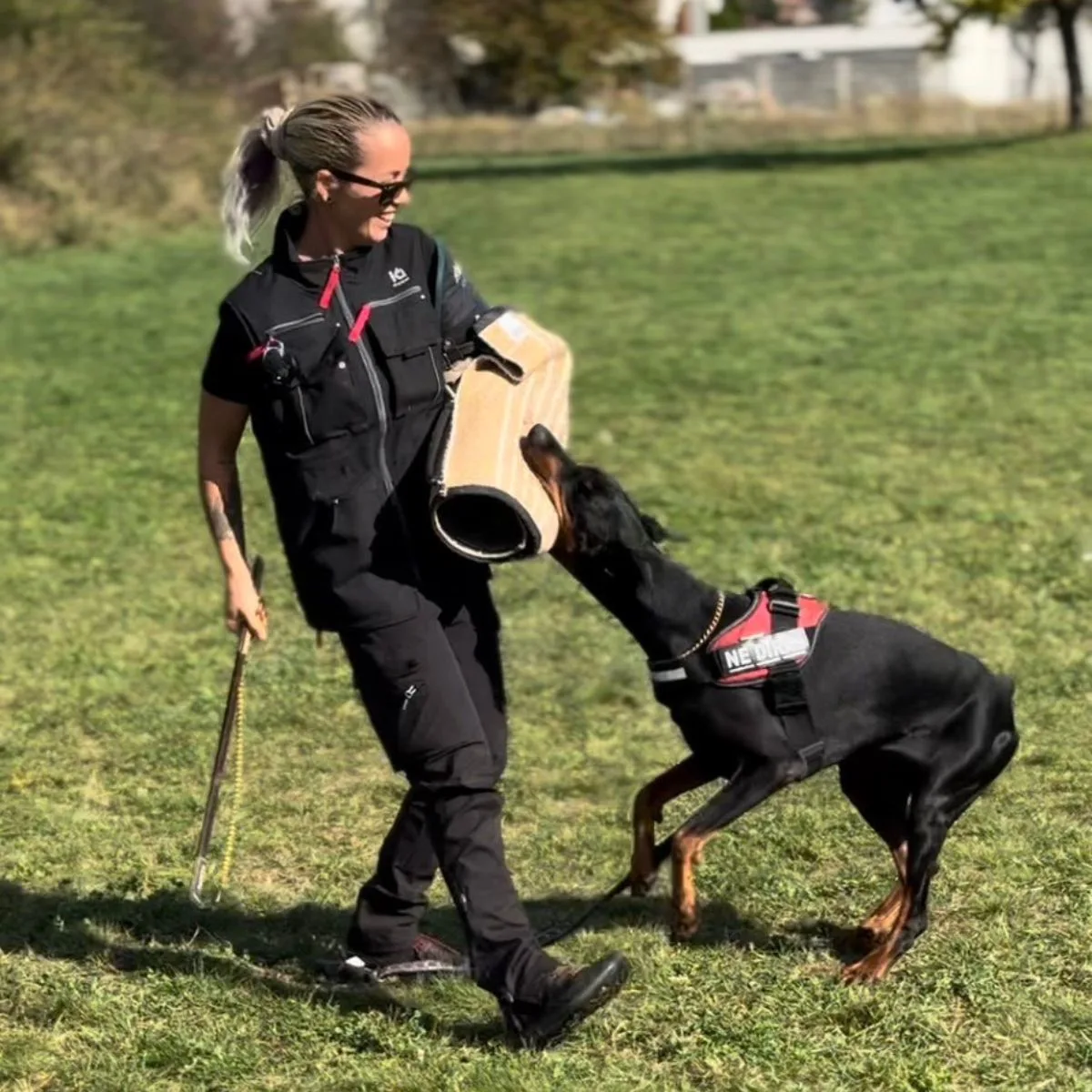
Nandina has been a lifelong dog owner and enthusiast. She shared her home with multiple breeds, including Giant Schnauzers, Cane Corsos, and Huskies. Currently, she is raising a three-year-old rescue and a working-line German Shepherd puppy.
Actively engaged in IGP dog sports for two years, Nandina is a certified instructor for basic obedience and socialization. She works as a trainer in her local dog sports club, and in her spare time, she handicrafts biothane gear for dogs.
